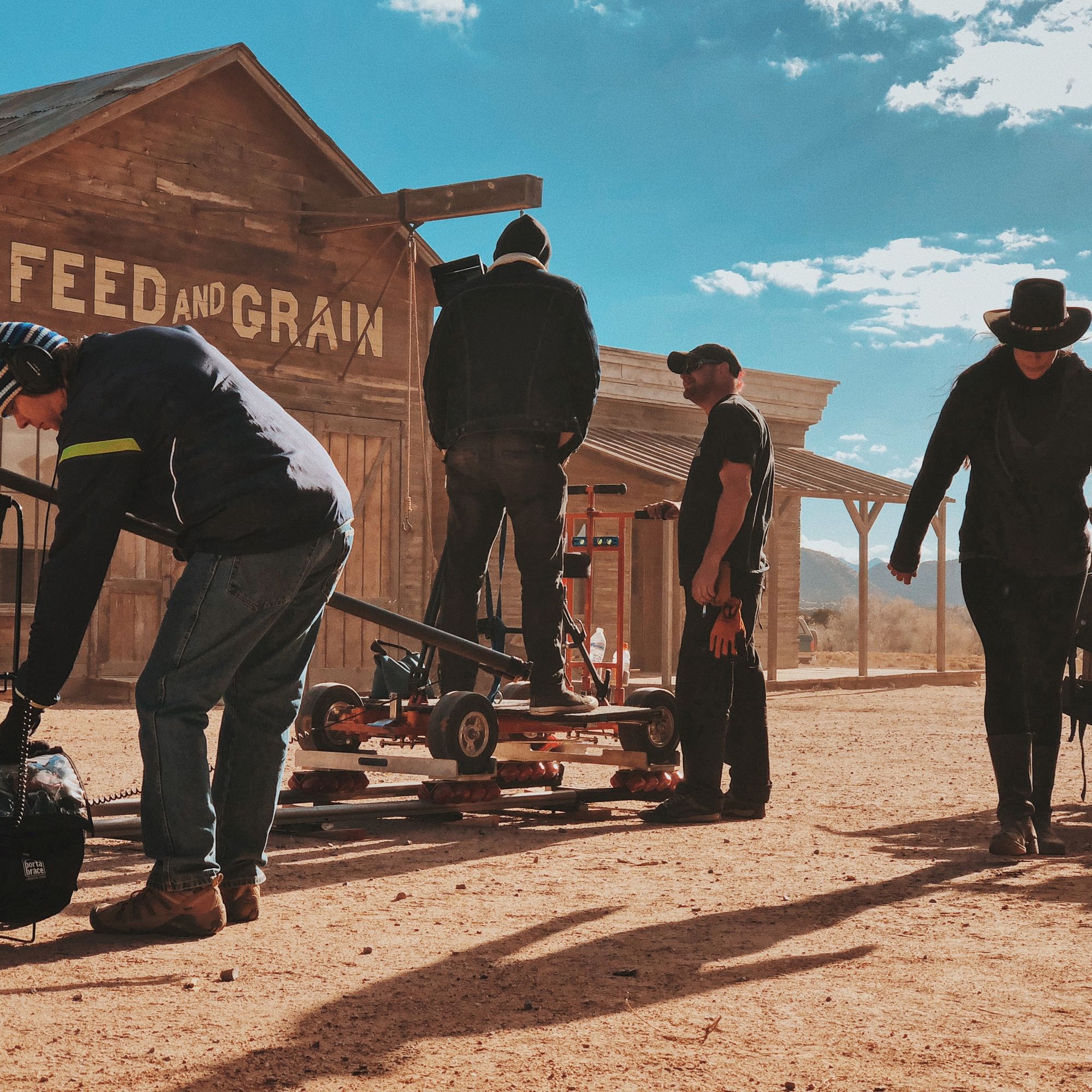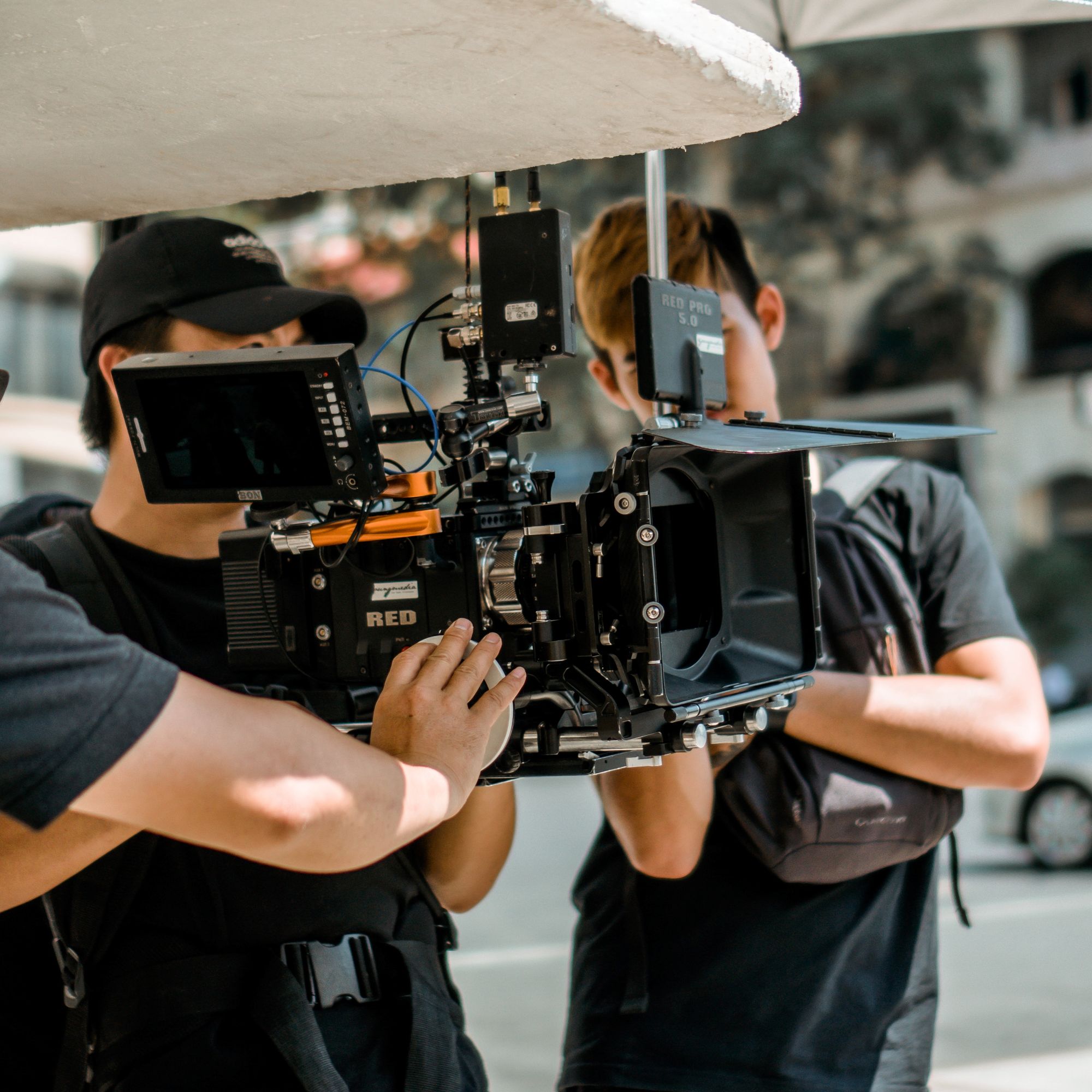Scenic Design Explained – How to Create a Set Design in 5 Steps
Hire film gear from local filmmakers.

Hire film gear from local filmmakers.
Have you ever wondered what scenic design is? It's only one of the most vital disciplines in a play, tv-show or movie production.
So what exactly does scenic design entail? Read along, and you'll find out everything you need to know!
If you're interested in becoming a scenic designer, you should start by learning about film production. Learn all of that and more in or article on filmmaking.

What is scenic design?
Scenic design is a discipline that goes by many names. Scenic design, scenography, set design, stage design, etc.
However many names it has, it all revolves around the same thing. Designing a set or a scene for a theater, movie, or television show.
Think about Central Perk Café from Friends or the Dunder Mifflin Scranton office from The Office. These are both examples of great set design, as they're iconic environments that the cast can interact with.
How else do you think they made 9 successful seasons where more or less every episode happens in an office that sells paper?
The scenic design has to fit the overall visual style of the project, and it should elevate the actors on stage.
What is a scenic designer?
A scenic designer is a person who is responsible for designing the set or stage alongside the director, production designers, and the other designers.
They have to develop the entire environment a tv-show, film, or play is set in. To do that, the scenic designer has to work closely together with the costume designer, art department, lighting designer, and sound designer as everyone has a part to play.

Scenic designer responsibilities
A scenic designer has many responsibilities, among them are:
- Read through the script and note down every significant thing about the scenery.
- Collaborate with the director and other departments to design and create the environment for the story.
- Illustrating their designs through scale models, construction drawings, and graphical rendering.
- Make sure that the design is developed and within the budget.
- Attend production design meetings with the other teams
- Coordinate the different objects on stage/set with the camera department and sound departments setup.
- Participate in rehearsals and do iterations according to the director's or actors' needs.
5 Steps to create amazing set designs
There are many ways to approach scenic design. We've listed 5 steps for creating incredible set designs.
1. Read and analyze the script
You have to do a thorough readthrough of the script and note everything interesting. However, unlike the other producers, your interest shouldn't lie in the characters, their motivations, etc.
You should focus on the visual design required to perform each scene and what you'll need to produce this.
A great way to start is to read through the script without taking notes. In this way, you can experience how the story unfolds and get a feel for the setting.
After that, you should read through it more closely and start noting down everything you need to produce each scene. Here you could color code every note depending on the category.
Have a separate color for props, lights, costumes, colors, etc. In this way, you can make sure that you have one of each color for each scene. You'll also make sure that you don't miss anything.
If you have any additional notes to the script, you should also write it down somewhere in your notes.

2. Develop and refine your ideas
Here you can start developing the ideas you have for each specific scene.
You can start by creating small sketches, not in detail but just illustrations for yourself that can help you later. This can help stimulate your visual understanding of how it will look and compare from scene to scene.
Once you've created a few different scenes, you can ask people from the different departments their opinions. You have to remember that the set design is made on teamwork, and you should always try to include the other teams.
3. Initial drawings and renderings
Once you're ready, you should start making the initial drawings of each set needed. Drawing a scene is tough work, but you shouldn't worry about detailing it with colors.
Simply sketch out what the scene will look like, in the form of renderings which are essentially rough drawings of a scene.
Don't worry about perfecting it. This will be done in a later step. The most important thing is that you show your creative visualization of the scene on the paper. In this way, you can show it to the other people in your team.
4. Create white models
Now it's time to get realistic about the setting. How will it work in real life?
You will have to create a plan where you note down the measurements of each object in your scene.
Once you've got your measured plan, it's time to create what's called a white model. A white model is a rough but detailed model of your scene where you use the right measurement, obviously in a smaller proportion.
You don't focus on the objects' colors, which is why you call it a white model. It is usually made with different types of white material.
The white model should be as detailed as possible, including small details such as the door types, windows, doorways, tiles, and such.
You'll have to remember that you are looking at the last time you can revise the design before the actual construction starts.
If you're still unsure about the best set, you can create different white models and discuss them with your creative team.

5. Render your set design image
Once you've completed the white model and everyone is satisfied with it, it is time to render the thing in full color. To do this you'll have to do as you did with the white model, except add colors and the different textures.
This model has to be as detailed as possible, as it'll help other departments to understand how the set will look.
You can bring this rendered set into rehearsals, so the cast and crew can plan the different scenes while it is being built.

Next Up: Learn how to become a production designer
I hope you feel more enlightened regarding what scenic design is.
If you want to learn more about production design in general, consider reading our article on production design.
Here you'll learn everything you need to know about production design and what a production designer does.
What is set design?
Set design is the design of the environment in which a play, tv-show or film unfolds.
What is a scenic design in a film?
Scenic Design in a film is the design of the set used in the movie.























